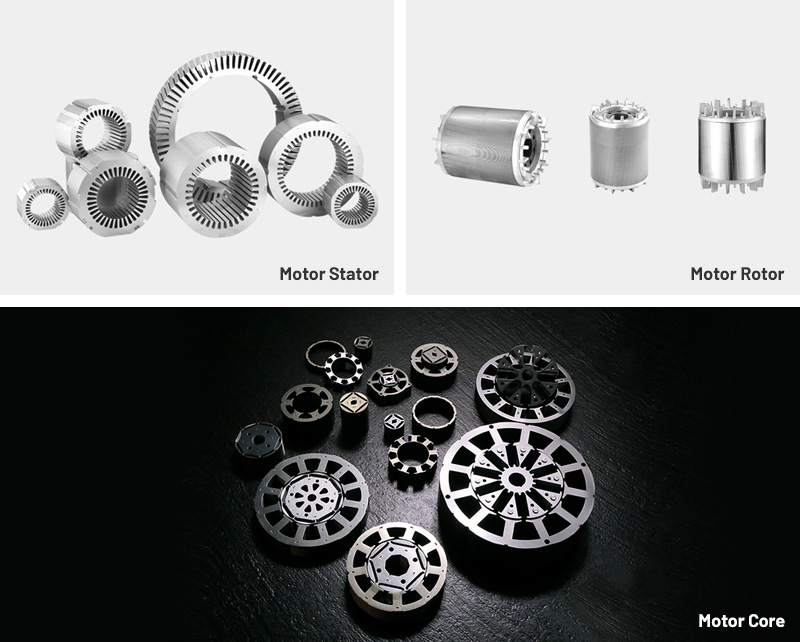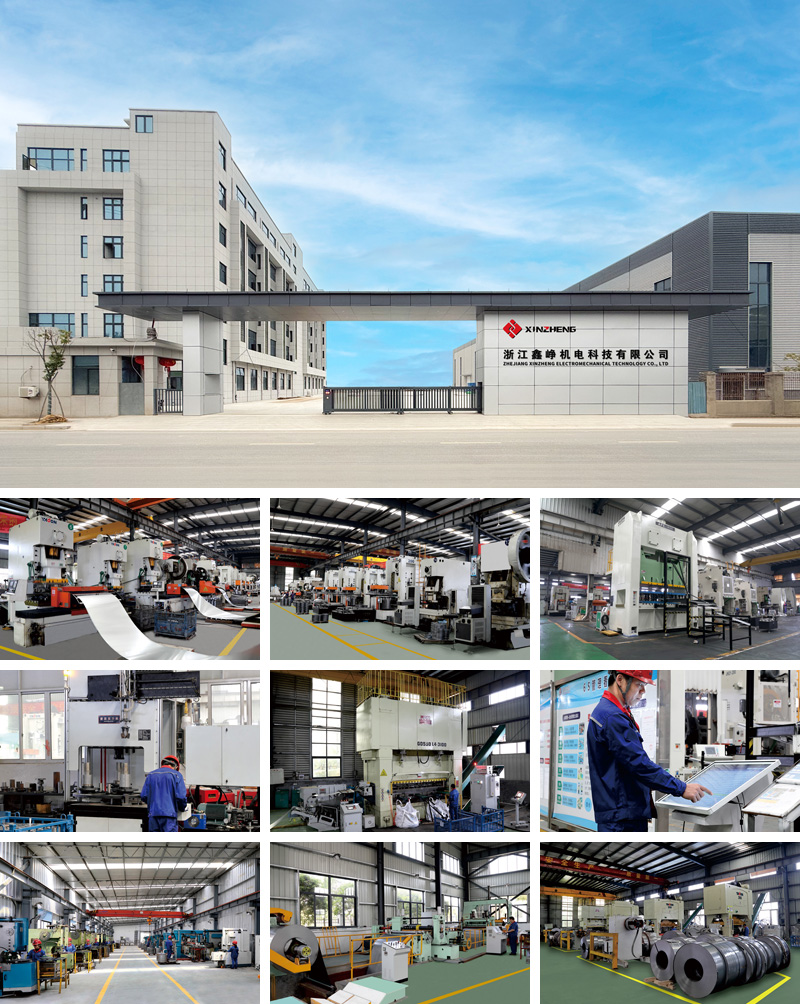High-speed electric motors are widely used across industrial automation, robotics, aerospace, electric vehicles, and precision machinery. Their performance relies heavily on the efficiency of magnetic components, particularly high-speed motor stator laminations. These laminations are essential in controlling magnetic flux, reducing energy losses, and ensuring thermal stability under high rotational speeds.
Growing global emphasis on energy-efficient and compact motors has driven the demand for advanced stator laminations that minimize eddy-current loss, enhance thermal management, and support continuous high-speed operation. Industries that require high torque density, precision, and low vibration increasingly depend on optimized lamination designs to meet strict performance standards.
Stator laminations provide the primary pathway for magnetic flux between the rotor and stator windings. Uniform flux distribution is critical for minimizing torque ripple and maintaining motor efficiency. Laminations with optimized geometry reduce localized saturation and ensure consistent magnetic performance.
Solid cores in high-speed motors generate significant eddy currents, resulting in heat buildup and reduced efficiency. Laminations consist of thin, insulated sheets that interrupt these currents, lowering core loss and improving thermal performance. The thinner the lamination, the better the reduction of eddy-current effects, which is crucial in high-speed applications.
High-speed motors experience considerable centrifugal forces and elevated temperatures. Stator laminations must maintain dimensional accuracy and mechanical integrity under these conditions. Proper material selection and lamination bonding methods prevent warping, vibration, and insulation breakdown, ensuring stable long-term operation.
High-speed motor stator laminations are typically manufactured from non-oriented electrical steel, selected for:
Low core loss and high magnetic permeability
Electrical resistivity to minimize eddy currents
Mechanical strength to withstand centrifugal forces
Thermal stability for prolonged high-speed operation
Material thickness usually ranges from 0.20 mm to 0.35 mm, balancing magnetic performance with structural integrity.
Slot geometry affects winding placement, flux density distribution, and heat dissipation. Optimized designs reduce vibration, minimize torque ripple, and enhance thermal efficiency. Precision in slot shape and size is particularly critical in high-speed motors to maintain rotor-stator alignment and reduce operational noise.
Advanced stamping ensures consistent lamination thickness, precise slot dimensions, and smooth edges. This process directly impacts:
Dimensional tolerances
Magnetic performance
Insulation integrity
Laser cutting or high-precision dies are often employed to meet the tight tolerances required in high-speed motor designs.
Laminations are stacked using mechanical interlocking, adhesive bonding, or welding. Proper assembly ensures:
Reduced vibration and torque ripple
Accurate alignment with rotor components
Structural stability under high rotational forces
Each lamination is coated with inorganic or hybrid insulation layers to prevent interlaminar shorts. Uniform coating thickness enhances thermal stability, minimizes eddy currents, and prolongs the stator’s operational life.
Material Consistency: Variations in steel composition can increase core loss and reduce motor efficiency.
Dimensional Accuracy: Even slight deviations in thickness or slot geometry can affect magnetic flux and motor balance.
Insulation Quality: Poor or uneven coatings lead to increased eddy currents and insulation failure.
Stacking Precision: Misaligned laminations cause vibration, noise, and reduced torque stability.
Tooling Maintenance: Worn dies or cutting tools compromise lamination quality and increase scrap rates.
Maintaining strict quality control is essential for high-speed motors to meet efficiency, thermal, and reliability standards.
Choosing a reliable supplier is critical for high-speed motor manufacturing:
Material Certification: Verification of electrical steel grade and magnetic properties
Precision Tooling Capability: Ability to maintain tight tolerances consistently
Quality Control Systems: Dimensional inspection, core loss testing, and coating verification
Production Consistency: Stable output to support continuous motor assembly
Standards Compliance: IEC and ISO certifications for electrical steel and laminations
A robust supply chain ensures consistent lamination quality, supporting high-performance motor design and long-term reliability.
Even with advanced manufacturing processes, challenges remain:
Fluctuating Steel Prices: Electrical steel costs can impact production budgets
Die Wear and Burr Formation: Can damage insulation or produce inconsistent laminations
Thermal Stress: Continuous high-speed operation may degrade insulation or affect material properties
Rotor-Stator Alignment: Misalignment increases vibration, noise, and energy loss
Efficiency Compliance: High-speed motors must adhere to stringent energy standards, leaving little room for manufacturing error
Addressing these challenges requires rigorous quality control, precise tooling, and high-grade materials.
High-speed motor stator laminations are critical in:
Industrial Automation: Robotics, conveyor systems, and machine tools requiring precise torque control
Transportation: Electric vehicles, high-speed trains, and aerospace propulsion
HVAC Systems: High-speed pumps and fans for energy-efficient climate control
Medical Devices: Compact motors for diagnostic equipment and surgical tools
High-quality stator laminations ensure low vibration, quiet operation, reduced energy consumption, and extended motor lifespan in demanding applications.
New low-loss, high-permeability steel grades reduce core losses and enable compact, high-efficiency motor designs.
Hybrid insulation coatings improve thermal endurance, extend operational life, and reduce maintenance frequency.
Laser cutting and high-precision stamping provide tighter tolerances, reducing vibration and improving magnetic performance.
Automation and real-time inspection enhance production consistency, reduce defects, and support large-scale manufacturing.
Recycling steel, reducing waste, and using eco-friendly coatings are increasingly integrated into high-speed motor lamination production.
Q1: How do laminations influence high-speed motor efficiency?
They guide magnetic flux and minimize eddy currents, which reduces energy loss and heat generation, improving overall motor efficiency.
Q2: What thickness is typical for high-speed stator laminations?
Generally 0.20 mm to 0.35 mm, depending on motor size and operational requirements.
Q3: Why is lamination insulation important?
It prevents interlaminar short circuits, reduces eddy currents, and ensures thermal stability under continuous high-speed operation.
Q4: Can these laminations handle continuous high-speed operation?
Yes, with appropriate materials, precision stacking, and proper insulation coatings, they maintain mechanical and thermal stability for prolonged duty cycles.
Product Category

Comprehensive Strength


Copyright © Zhejiang Xinzheng Electromechanical Technology Co., Ltd. All Rights Reserved.
This website uses cookies to ensure you get the best experience on our website.